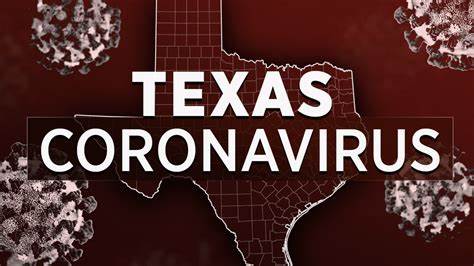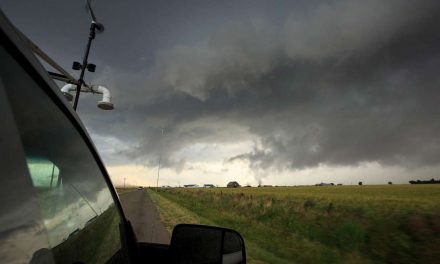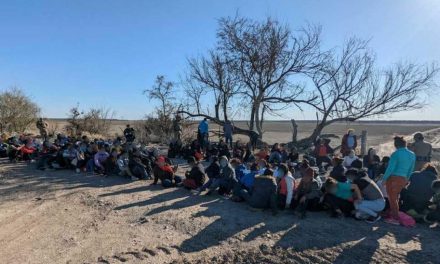By Edgar Walters, The Texas Tribune
The man who arrived at the emergency room in Childress earlier this month did not have COVID-19, but he did have a serious abdominal condition that required surgery, hospital administrators said.
The man waited more than nine hours in the emergency room while doctors called eight larger hospitals to see if they could perform the surgery, said Holly Holcomb, chief operating officer for Childress Regional Medical Center. They declined to accept the patient, she said, and the man died.
“I’ve been here 24 years and I just don’t remember ever not being able to transfer a patient out,” said Holcomb, whose hospital sits near the Oklahoma border, roughly midway between Wichita Falls and Amarillo.
Rural doctors and hospital administrators in West Texas and the Panhandle say they’re in a bind as larger hospitals in Lubbock, Amarillo and El Paso fill with coronavirus patients, leaving the smaller facilities unable to transfer their most gravely ill patients to receive higher levels of care.
Texas is experiencing a second surge of coronavirus hospitalizations, up more than 75% since the beginning of October. On Oct. 28, there were more than 5,600 people with COVID-19 in Texas hospitals, a patient volume not seen since August, when the state experienced a crush of patients that pushed some South Texas hospitals to their limit.
The latest surge has been felt acutely in El Paso, where leaders recently converted a convention center into an emergency medical site to provide additional hospital beds, which are so overrun that some patients are being airlifted out of the city.
And in Lubbock, where Texas Tech University has reported more student infections than any other university in the state as doctors warn hospitals are full.
And in Amarillo, where dozens of nurses have recently had to miss shifts because they were either sickened by the coronavirus or quarantining because of exposure, stretching hospital beds thin.
But the consequences of Texas’ burgeoning “fall wave” of the coronavirus pandemic extend hundreds of miles beyond those far-flung cities. The rural communities of the surrounding Texas plains and arid regions are not immune to the virus’ spread, with many small towns reporting all-time highs this month for coronavirus cases.
And even in rural counties that have not yet seen a surge of infections, health care workers warn that the virus’ spread could threaten the health of any patient experiencing life’s day-to-day emergencies: a heart attack, a stroke, a car wreck.
Fewer than half of the state’s rural hospitals perform surgeries or deliver babies, said John Henderson, chief executive of the Texas Organization of Rural and Community Hospitals. As urban hospitals fill up, it puts pressure on smaller facilities to find beds for patients in crisis.
“When you’re a small, rural, isolated hospital and you have a patient that exceeds not just your staffing capability but your scope of services capability, that becomes really hard,” Henderson said. “Rural hospitals are trying to manage that, but it’s never been harder than it is right now for most of West Texas, the South Plains and the Panhandle.”
In Childress, the hospital’s six-bed emergency room has been stretched thin, Holcomb said, and health care workers have asked patients with COVID-19 symptoms to wait in their cars when possible. “They’re either stacking up in the waiting room or out in the parking lot,” she said.
Small-town doctors across Texas report having to hold extremely sick patients in emergency rooms and ambulances eight hours or longer because of bed shortages in larger hospitals’ intensive care units. And many say they’ve had to look for specialty care hundreds of miles away, sometimes across state lines.
Dr. Robert Hancock, who works at several hospitals in Texas and Oklahoma and is president of the Texas College of Emergency Physicians, said one of the hospitals recently admitted a COVID-19 patient with a host of other medical problems who needed specialized care.
“We had called every hospital in Oklahoma that had the capability we needed, every hospital system in Dallas-Fort Worth; Little Rock, Arkansas; Lubbock; Amarillo; Wichita Falls,” Hancock said.
“Over about an eight-hour period we got told ‘No’ by everybody,” he said. “We wound up having to keep the patient and just do the best we could with the resources we had.”
As winter nears, so does the threat of icy roads and flu season. Coupled with rising coronavirus infections, that’s led leaders of Eastland Memorial Hospital, which sits near Interstate 20 between Fort Worth and Abilene, to prepare for a very busy four-month stretch.
“It’s pretty much all hands on deck here in Eastland,” said Ted Matthews, the hospital’s chief executive, adding that the county is already “running pretty much at an all-time high” for COVID-19 cases. Eastland County, home to fewer than 20,000 people, has a daily average of about 50 active infections and exposures requiring quarantine, Matthews said.
The hospital transfers about 45 patients each month, and Matthews said he is paying close attention to capacity in nearby cities. So far, that’s been less of a threat than a more pressing issue: his own staff falling sick from COVID-19.
“We are taking care of our community at this point, but it’s always an issue having the number of staff that we need, so when we lose two or three really good nurses, we have our backs to the wall,” he said.
Jerry Jasper, chief executive officer of Brownfield Medical Center, located about 40 miles southwest of Lubbock, said hospital capacity is the most pressing issue his community faces.
The 18-bed hospital is grappling with its own influx of COVID-19 patients. Doctors and nurses there are able to care for those patients, except the ones who require a ventilator, Jasper said. But the unpredictability of whether Lubbock hospitals will be able to accept transfer patients makes it difficult to plan for emergencies.
“If we get in a situation and need to transfer someone out that needs services above what we can provide here, that’s very concerning,” he said.
In Deaf Smith County, which borders New Mexico southwest of Amarillo, a shortage of beds in nearby cities has local officials alarmed. The county is home to beef processing plants, several state highways and a brief stretch of Interstate 40.
“I put out a pretty dire warning to our community that I was afraid that we were going to get to a point where we were going to have a hard time finding a place to transfer anybody,” said Jeff Barnhart, chief executive of the county’s hospital district. “We’ve sat on ICU patients for four or five days, because we had nowhere to send ‘em to.”
When possible, he’s sent patients by air to Dallas, Fort Worth, Albuquerque and even Oklahoma City, but he fears the day when there’s no helicopter available for the trip.
“I’m afraid I’m going to have an ambulance out on the road before too long, and that’s going to be a 16-hour trip,” he said.
Disclosure: The Texas College of Emergency Physicians and Texas Tech University have been financial supporters of The Texas Tribune, a nonprofit, nonpartisan news organization that is funded in part by donations from members, foundations and corporate sponsors. Financial supporters play no role in the Tribune’s journalism. Find a complete list of them here.
This article originally appeared in The Texas Tribune at https://www.texastribune.org/2020/10/29/texas-coronavirus-rural-hospitals/.





